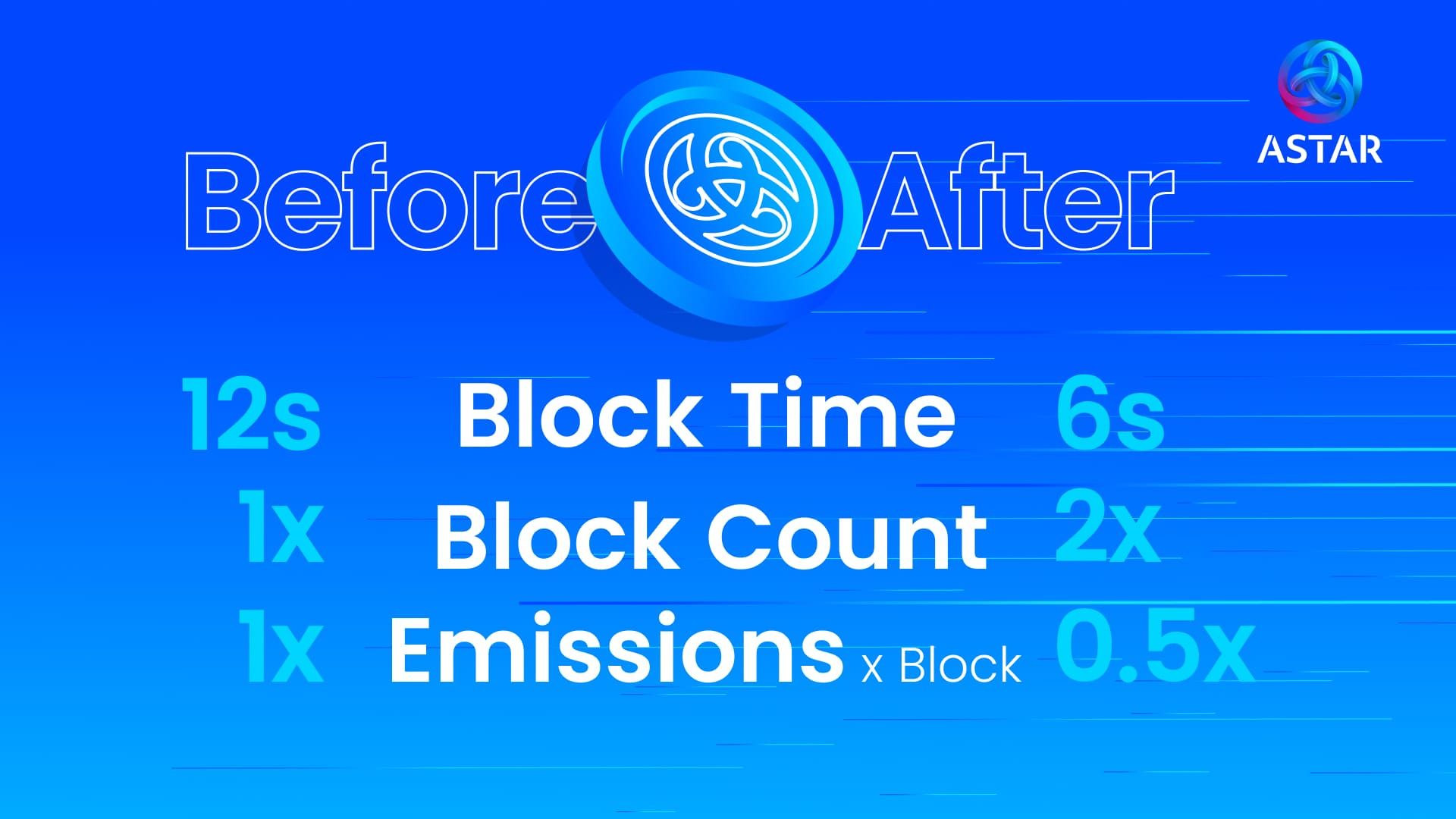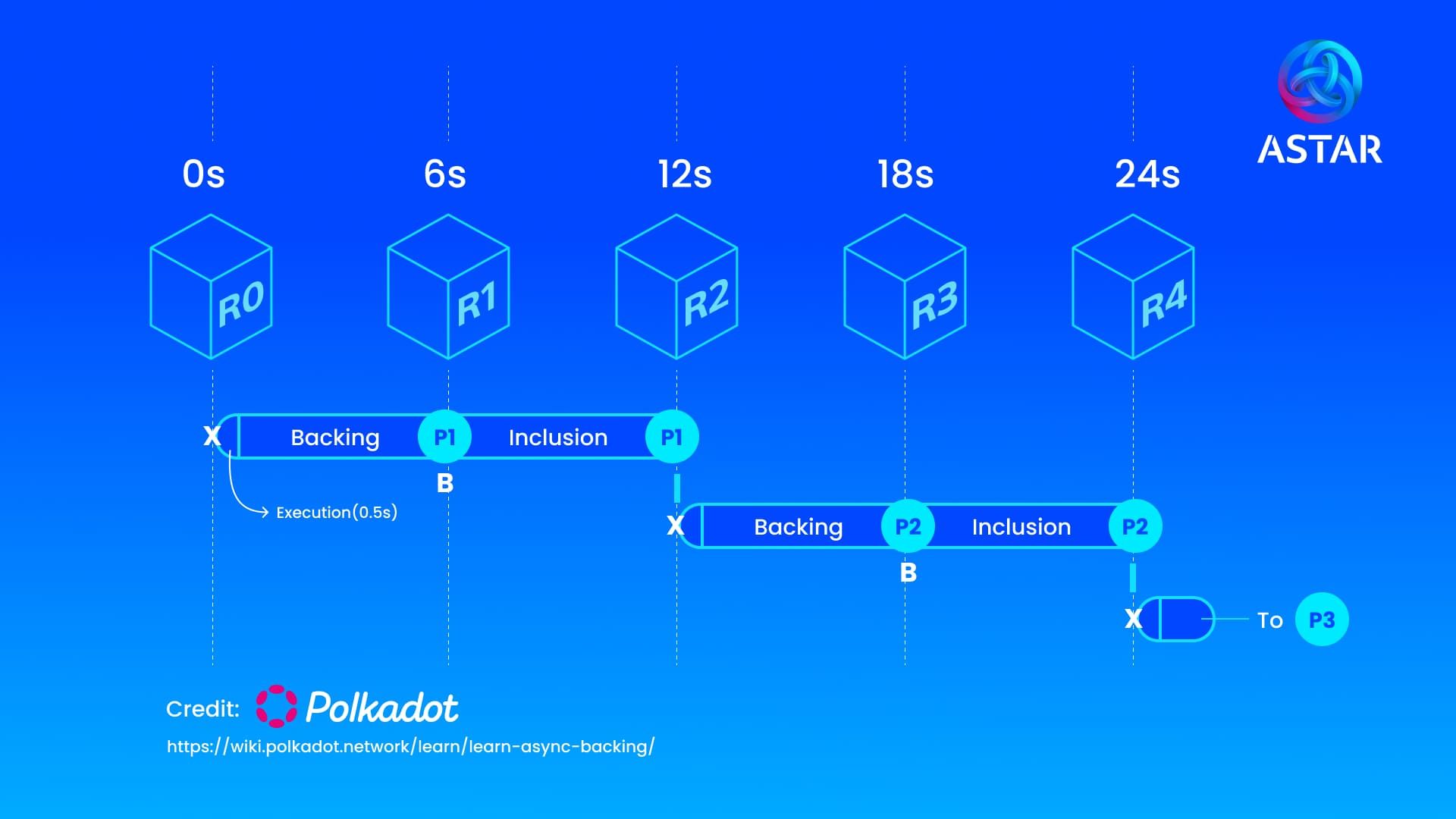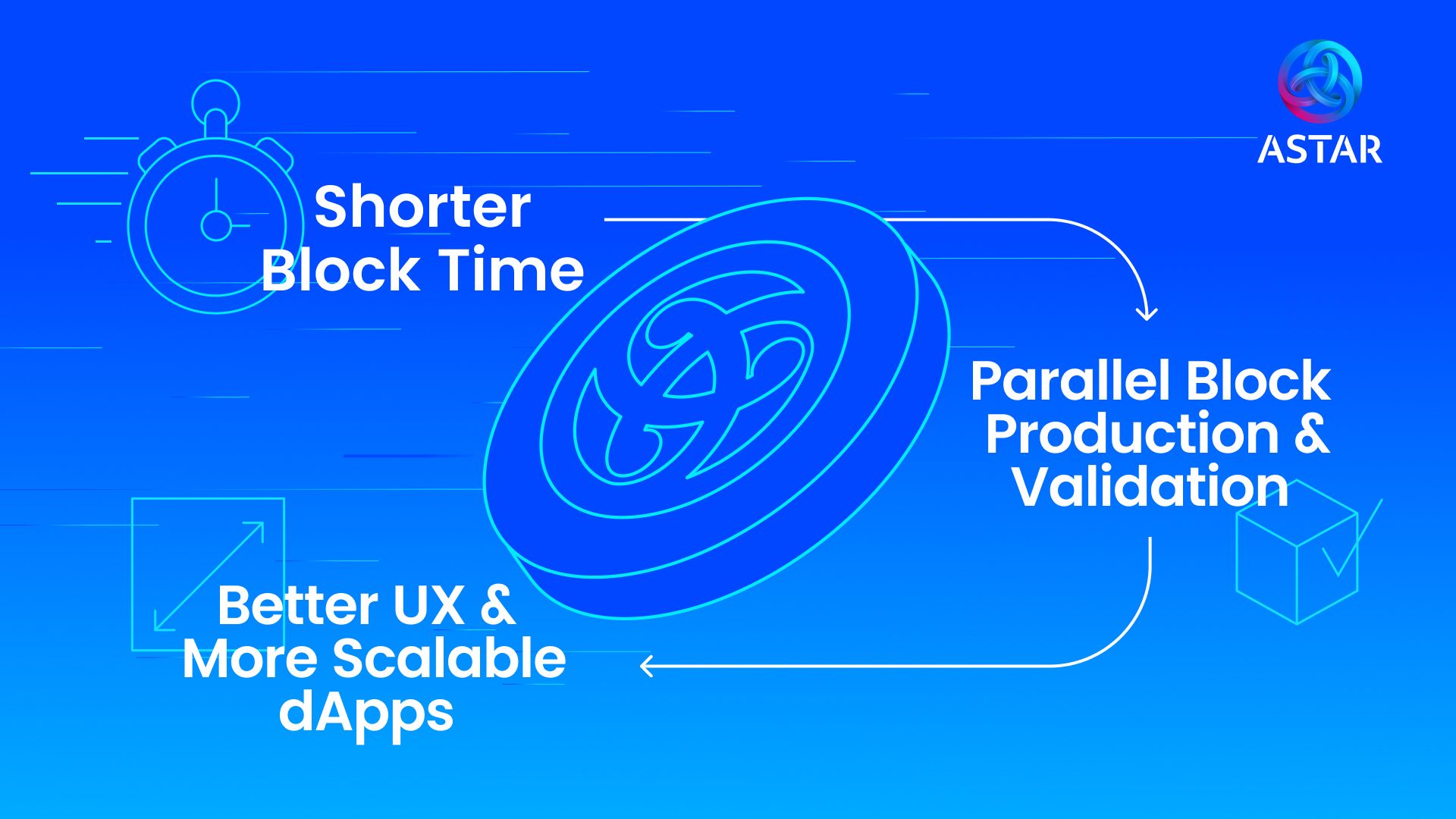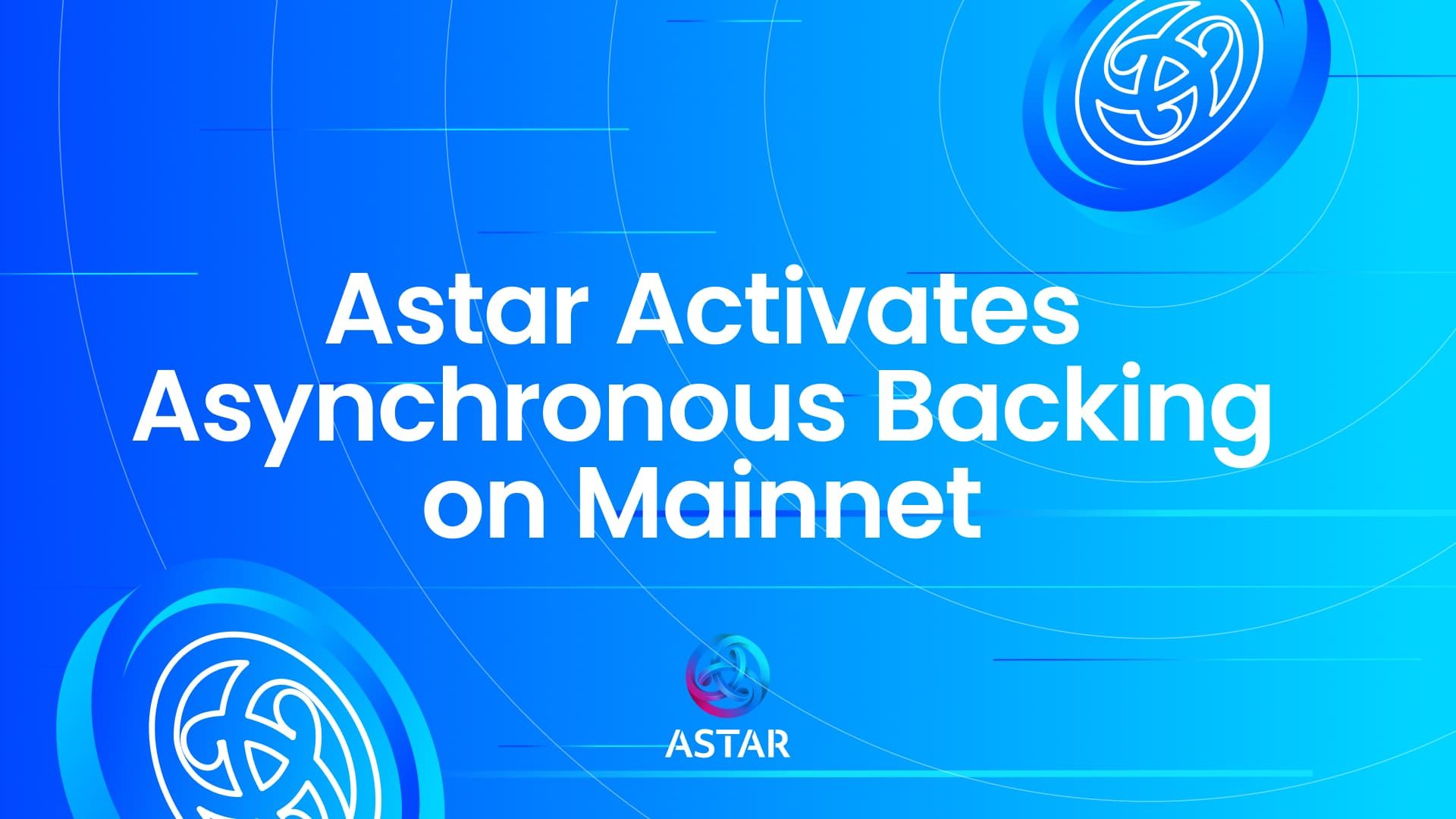Table of Contents
Astar has activated Asynchronous Backing on Mainnet this June, marking a major technical upgrade that will significantly improve the performance, responsiveness, and scalability of the network. This change represents one of the most important steps forward for Astar’s infrastructure, enabling a faster and more efficient block production process without altering the core economic logic of the chain.
Originally introduced in Polkadot’s Relay Chain, Asynchronous Backing allows parachains to decouple block production and validation, enabling these processes to occur in parallel. The result is a leaner, more scalable pipeline that reduces block times, increases throughput, and improves the overall experience for developers and users.
What’s Changing
-
Block time has dropped from 12 seconds to approximately 6 seconds
This halves the time it takes to produce new blocks, making the network more responsive and reducing time-to-finality. -
ASTR emissions per block are reduced by 50%
With block time halved, the number of blocks produced per year has doubled. To maintain current inflation levels, emissions per block have been halved, keeping total yearly issuance unchanged. -
No changes to dApp staking or governance lockups
All durations in Astar remain calculated based on block units, not seconds. Governance locking periods, dApp staking cycles, and other time-based mechanics continue to function as intended.

How Asynchronous Backing Works on Astar
Asynchronous Backing fundamentally improves how blocks are produced and validated by introducing a pipelined approach to parachain block inclusion. Instead of waiting for a block to be fully included before producing the next, collators can now prepare multiple blocks in advance using context from recently proposed but not yet included blocks, known as the “unincluded segment”. This enables backing and inclusion to happen in the same relay chain block, significantly reducing delays and increasing efficiency.

In this new model, parablocks are produced every 6 seconds, with up to 2 seconds available for execution which is four times more than before. This unlocks support for more complex transactions and larger data payloads. By allowing multiple unincluded parablocks to coexist, the network becomes more resilient and better utilizes available blockspace. Collators can submit blocks earlier, validators can begin backing sooner, and inclusion happens faster, all without compromising finality or security.
The result is a more scalable and efficient system that doubles transaction throughput, reduces latency, and unlocks greater flexibility for builders. These improvements happen entirely at the protocol level, ensuring a seamless upgrade with no disruptions to users or developer tooling.
For a deeper technical explanation, please refer to the official Asynchronous Backing – Polkadot Wiki.
What It Unlocks
-
Faster block production
A shorter block time enables quicker confirmations and more responsive dApp interactions across the network. -
Higher throughput
By allowing multiple parachain blocks to be in different stages of validation at the same time, Asynchronous Backing significantly increases the number of transactions and messages the network can process. -
Improved User Experience for dApps
The upgrade supports smoother experiences for real-time applications such as payments, trading platforms, social tools, and on-chain games. Builders will be able to design more interactive, lower-latency products.

Why It Matters
Asynchronous Backing moves Astar into a new category of performance, making it critical for scaling to support higher user volumes, more complex dApps, and emerging use cases in areas like gaming and DeFi. It achieves this without any disruption to staking logic, governance periods, or the token’s inflation schedule.
For developers, this change introduces a faster cadence to block production. While block-based durations stay consistent, off-chain systems that assume a 12-second interval may require updates. Scripts, backend services, or monitoring tools should be reviewed accordingly.
The upgrade has already been tested on Shiden and validated internally. The governance vote to activate Asynchronous Backing on Astar has passed. Developers are encouraged to test and build on async-enabled environments like Shibuya.
This upgrade is more than a performance enhancement, it’s an investment in the future of Astar’s ecosystem. Let’s activate it, together.

